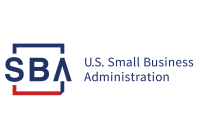A long paper trail
By Sarah Kucharski • Staff Writer
Jackson Paper Engineer Chas Mathis strides confidently through the company’s used cardboard warehouse, up a steep metal grate, and up to the pulper. The machine churns like a giant blender as loads of cardboard boxes slowly move up the conveyor belt, and upon reaching its end drop down into the murky tank with a splash.
Hot water breaks down the cardboard as it is circulated, and a large metal rod stirs the batch spoon-like to remove bale wires and shiny labels that won’t dissolve.
The pulper is where it all begins. Truck loads upon truck loads — 2.2 million cubic yards per year — of old cardboard containers that would have gone into a landfill if not otherwise recycled come in to Jackson Paper’s Sylva warehouse and are broken down to their raw fiber to be remade into paper.
The company makes 310 tons of paper daily in a continuous system with work shifts that operate 24 hours a day. The paper, known as corrugated medium, is shipped out to box makers to insert in a ripple pattern between the two layers of exterior and interior cardboard — pizza and liquor boxes for example. The corrugated medium is what gives the box its strength.
Related Items
“Our customers would buy a lot more product from us if we could make more,” said Tim Campbell, Jackson Paper’s president and CEO.
The industry is on the upswing after a five-year downturn, when like so many industries the business went overseas. While Asian companies were leaders in electronic production, and major manufacturers of other goods such as toys, the countries were not capable of making good boxes in which to put their products. Items were being made in Asia and shipped over to be put in American boxes, Campbell said.
That changed in 2000, when Asian countries began building packing mills and box plants. Nearly half of the paper plants in the U.S. closed. However, demand for American boxes closely followed the Gross National Product and in December 2005 the market begin to rise. In response, Jackson Paper is hoping to put in another production line, provide more jobs and generally grow the business. Right now the company employs 130 workers and pays $4.6 million annually in wages and salaries.
It’s a glimmer of hope and a promise for the future for a county that has lost hundreds of manufacturing jobs to industry closure in the past four years alone. As the corrugated paper market made a turn for the better in December 2005, Cashier’s Consolidated Metco plastics plant announced that approximately 80 workers were being laid off, making it the largest downsizing of any kind in Jackson County since the Ashley Company furniture plant closed in 2002. And the recent closure of the Fruit of the Loom plant in Georgia left hundreds of WNC workers unemployed.
Jackson Paper Manufacturing can’t employ them all, but as champions of recycling, the company is in the profession of making use of the things nobody else wanted.
On the line
Richard “Dickie” Clayton, the head of Jackson Paper’s maintenance department, got a job at the mill in 1982, just days after being laid off from the Skyland Textile clothing manufacturing plant where he worked as a cutter.
“They hired me on the spot,” Clayton said.
Although he had never worked with paper mill machinery before, he was good with his hands and gradually learned how to do at least a little bit of everything. One of his first jobs was putting on a new roof. Today, a self-described mill rat, he and his 16-member crew fit pipes, work on pumps, fix dryer gears and do what it takes to keep the mill up and running.
“There’s nobody in the mill that’s older than that paper machine,” Clayton said.
From the pulper where old cardboard boxes are broken down for fiber the watery mixture is pumped through the mill to the 80-year-old papermaking machine. The system is steam powered. In a typical day the plant uses 210 tons of fuel — wood shavings and saw dust collected largely from local sawmills such as T&S Hardwoods that would otherwise go into a landfill.
The steam turns a turbine that produces 879 horsepower. The steam also is used to dry the paper as it is made. The fibrous mixture is sprayed onto the papermaking machine, and through a process of pressing and sucking out water, the mixture gradually changes from mostly water to mostly fiber as it travels down the line.
The paper winds around a reel on the other end of the line just below block letters spelling out the word “Mountaineer.” The reel spins fast as a top. The only break in production is for the millisecond it takes to break one ream of paper off the line and begin a new one. The finished roll of paper weighed in tons is lifted off the line with a crane.
Finished rolls each cut to individual customers’ specifications wait in the shipping bay to be sent out via semi-trucks and rail. Excess paper — cut off like the ends of a tube of cookie dough — is saved. The company is capable of seamlessly melding these excess rolls into one larger roll to meet customers’ needs without simply having to make another one.
A many ringed tree
The Mead Company first opened the Sylva paper mill in 1927. The plant was one of three chemical-based pulp mills the company owned. By 1973, faced with environmental compliance laws, the company chose to close the plant and built a new one in Alabama rather than convert its process. Mead turned the mill over to the Town of Sylva.
In 1978, Dixie Container purchased the mill with the intent of using it to supply the company’s box plants. E.K. Huntley was on board with the company in their corporate offices in Richmond, Va., where he’d been working for 10 years, moving up from the payroll department to data processing and accounting.
For four years, Dixie worked on converting the plant from a pulp mill to a recycling based mill, putting the company’s corporate assets on the line. Profits from Dixie’s box plants went right back in to the paper mill to cover start up costs.
“It put a heavy financial strain on the corporation just to make this conversion,” Huntley said.
The first commercially viable ream of paper made from recycled materials came off the line in December of 1982, but the mill had trouble maintaining quality control and meeting customer specifications, Huntley said.
“A lot of paper was made that was not sellable paper,” he said.
There was little money for employee benefits, which may have contributed to the series of management changes from 1985-87. Each mill manager had his own ideas about how the mill should operate. And while some managers were “people people” and didn’t have the mechanical knowledge, others would have preferred to spend their days with the machines alone, Huntley said. Finding the right balance of the two was key.
Huntley, who was born and raised in Rutherford County, came on at the Sylva mill as comptroller June 1, 1989. He was divorced and his daughter was in college, and working in Sylva represented a move up.
“At the corporate headquarters I’d felt I’d gone as far as I could go,” Huntley said.
His daily tasks included accounting, but also the supervision of personnel, production costs and sales.
But soon employees learned that the mill was again for sale “lock, stock and barrel.” Packaging Corporation of America was forced into buying the mill as part of a package deal Dixie cut to sell its box plants.
“They had to take us as part of the deal, but they didn’t really need us and didn’t really want us,” Huntley said.
The mill went from Dixie — owned by one man — to PCA — a major conglomerate — and the system quickly was bogged down with red tape and micro-management. On one hand, PCA offered new programs designed to improve cost savings and efficiency. On the other hand, such programs were hard to scale down to fit such a small production mill.
“What I saw was waste,” Huntley said, of the corporate America system and the tendency to throw money at problems without solving them.
Just four years later PCA sold the mill again — but this time change looked as though it might be good.
Recycling the recyclers
Two investors — Tim Campbell and Jeffrey Murphy — bought the Sylva paper mill in 1995.
“As soon as they came onboard we could see that they were people persons,” Huntley said.
Campbell had worked in the paper industry for 27 years, having been educated as a forestry engineer and spending four years in the military service before going to work for a company that made plywood and paper. Somewhat ironically, Campbell was division president at Mead in Alabama after the company closed shop in Sylva and relocated.
He left the corporate world to start his own business designing and building recycling based mills. The Sylva mill offered a chance to run an established recycling-based operation that was centrally located and provided easy access to metropolitan areas such as Atlanta.
Metropolitan areas are the largest paper consumers and the largest waste paper producers. If a plant were located relatively close to such cities, then it would be close to the supply and demand for its products, Campbell said. Almost 99 percent of Jackson Paper Manufacturing’s used cardboard comes from Atlanta, Chattanooga and the Tri-Cities.
But just recycling material to make the paper wasn’t enough. Campbell had learned from the Mead experience. The mill had closed because it was unable to adequately process its waste discharge. Under Campbell and Murphy’s direction the system was revamped.
“We are among the foremost experts in building closed, zero discharge systems,” Campbell said.
The system intakes water from Scotts Creek, which is heated using sawdust and wood scraps from saw mills. The system recirculates everything so that 110,000 gallons of process water is treated each day so that it can be reused. The only water that escapes the system is in the form of steam, seen billowing from the plant’s smokestacks. By treating and reusing process water, the plant saves more than 40 million gallons of fresh water each year.
However, by using water from Scotts Creek the plant faces an interesting challenge — the sediment and erosion caused by development and streambank disturbances impede the system. Scotts Creek, which is known to run red when it rains, also is one of the most polluted streams in Jackson County.
According to 2005 sampling reports from the Jackson County Health Department, where Scotts Creek and the Tuckasegee River meet E. coli levels were measured at 1,560 colonies per sample. For reference, an average of 126 colonies per sample is considered to be a health hazard, said Watershed Alliance of the Tuckasegee River director Roger Clapp during a water quality meeting held this past summer.
Jackson Paper’s zero discharge system has attracted attention from around the world, with company representatives traveling from as far away as France and Colombia to see how it works.
The root of it all
Jackson Paper Manufacturing supplies approximately 30 independent customers. The company prides itself in being able to make a recycled product that is indistinguishable in quality from its virgin paper manufacturing competitors and being able to keep down costs.
“We think we’re fourth, fifth, sixth lowest cost producer around,” Campbell said.
Making sure those costs stay down is three-fold: the cost of wood fuel to heat water and produce steam; the local low cost of electric power; and a motivated, mechanically sound work force.
“This workforce is so much better than the second place one,” Campbell said, noting a plant he worked at in Louisiana. “These people are light years better.”
Clayton, the mill’s maintenance director, agreed. There are men in the mill who know even the equipment’s sound so well that they can hear someone walk by even if they’re not looking. And here the workers often are farm grown, with a penchant for fixing what they’ve got rather than buying something new. It’s a mentality founded in the mountaineer lifestyle that shaped this landscape.
“This is a dying trade right here,” Clayton said of hands-on mechanics.









